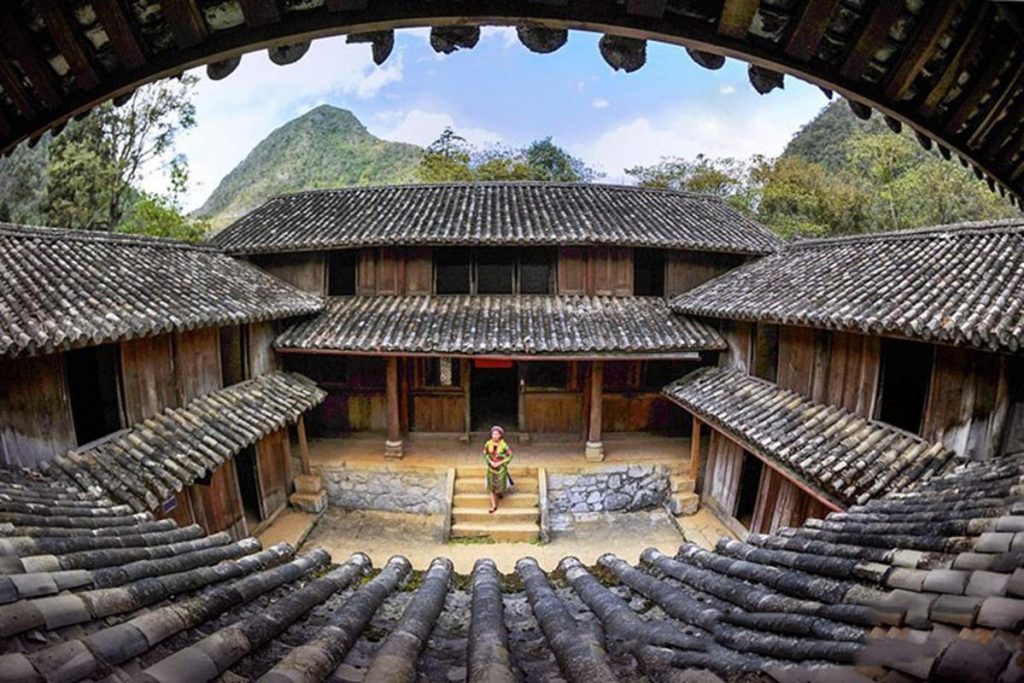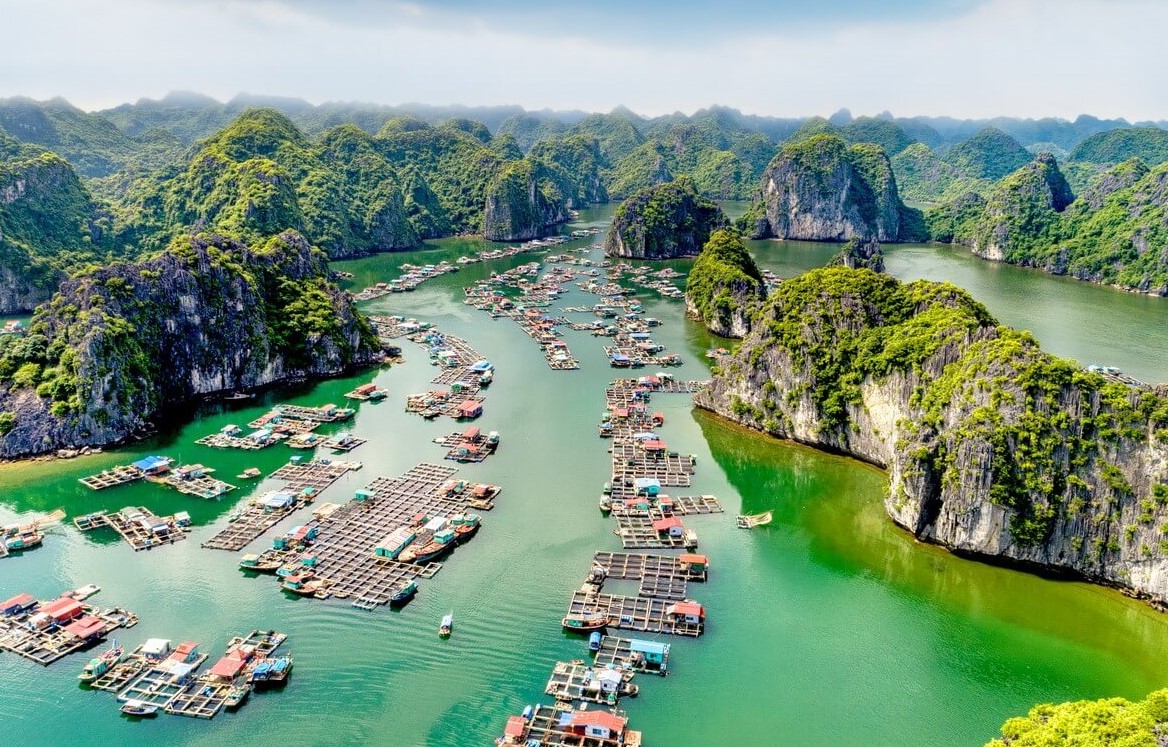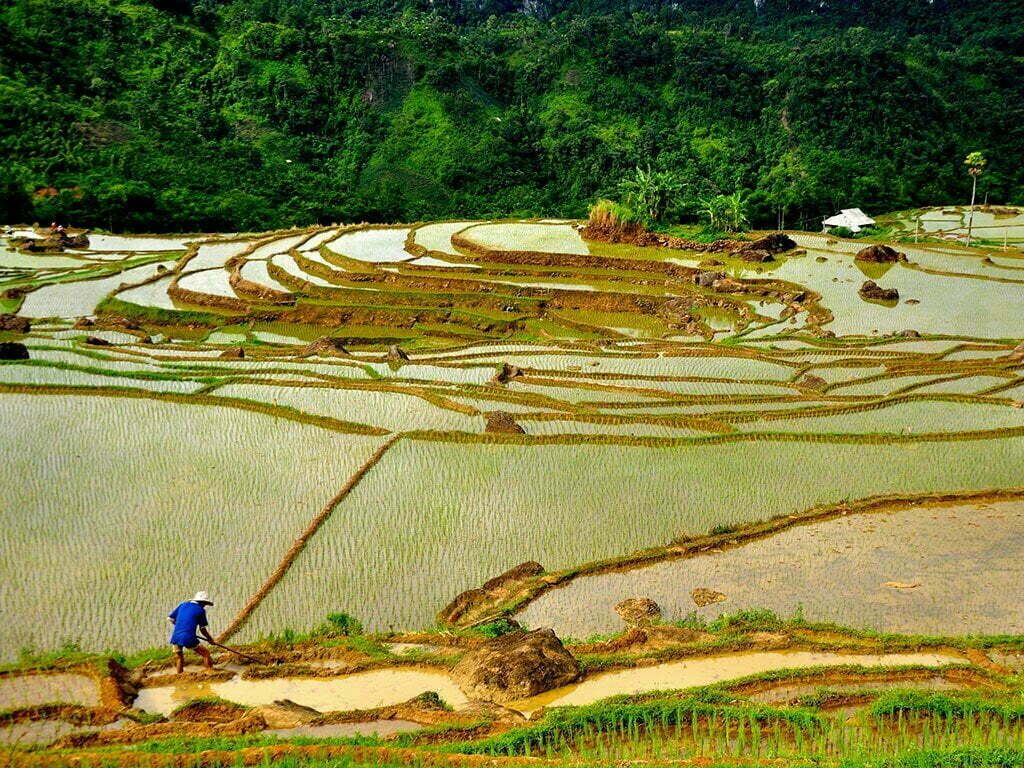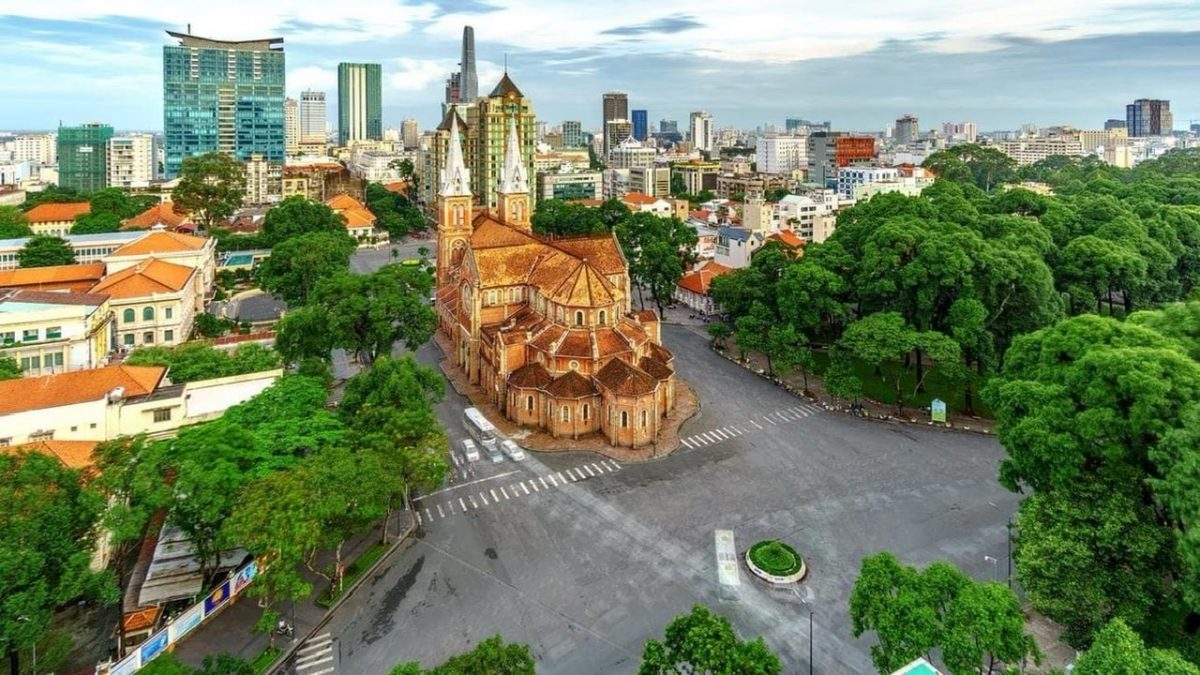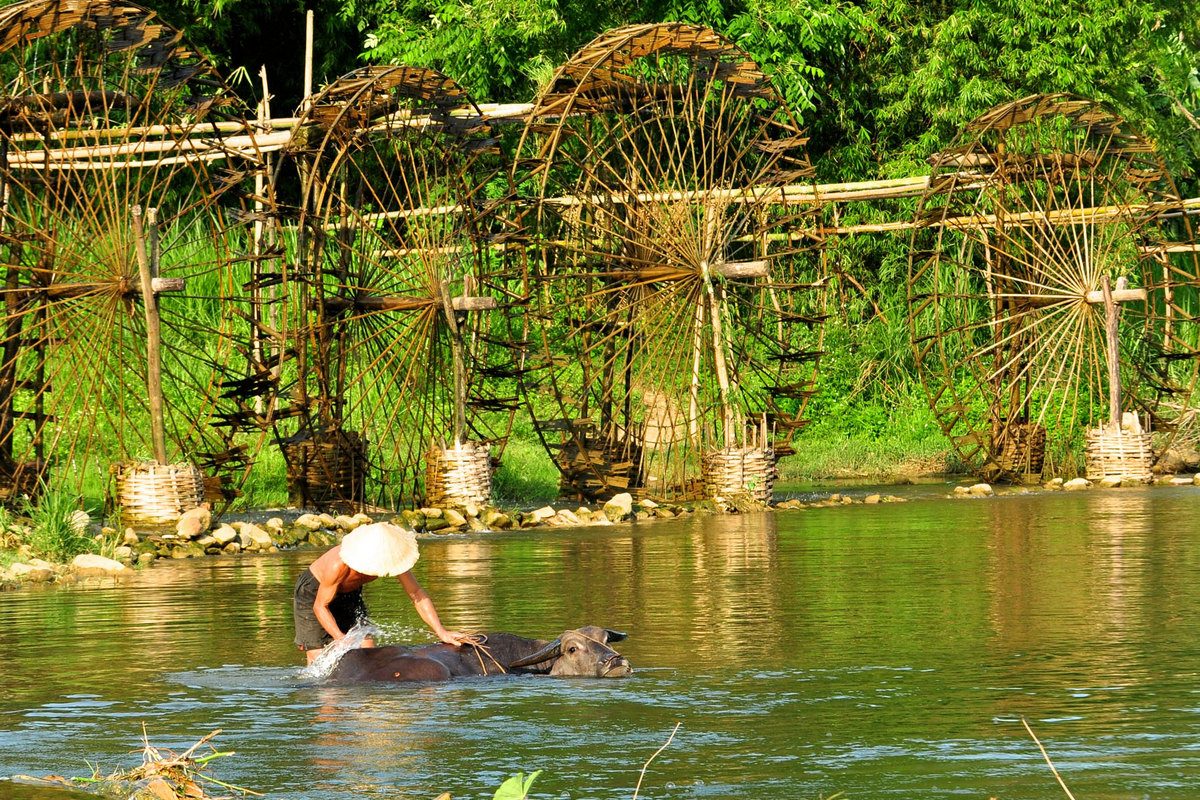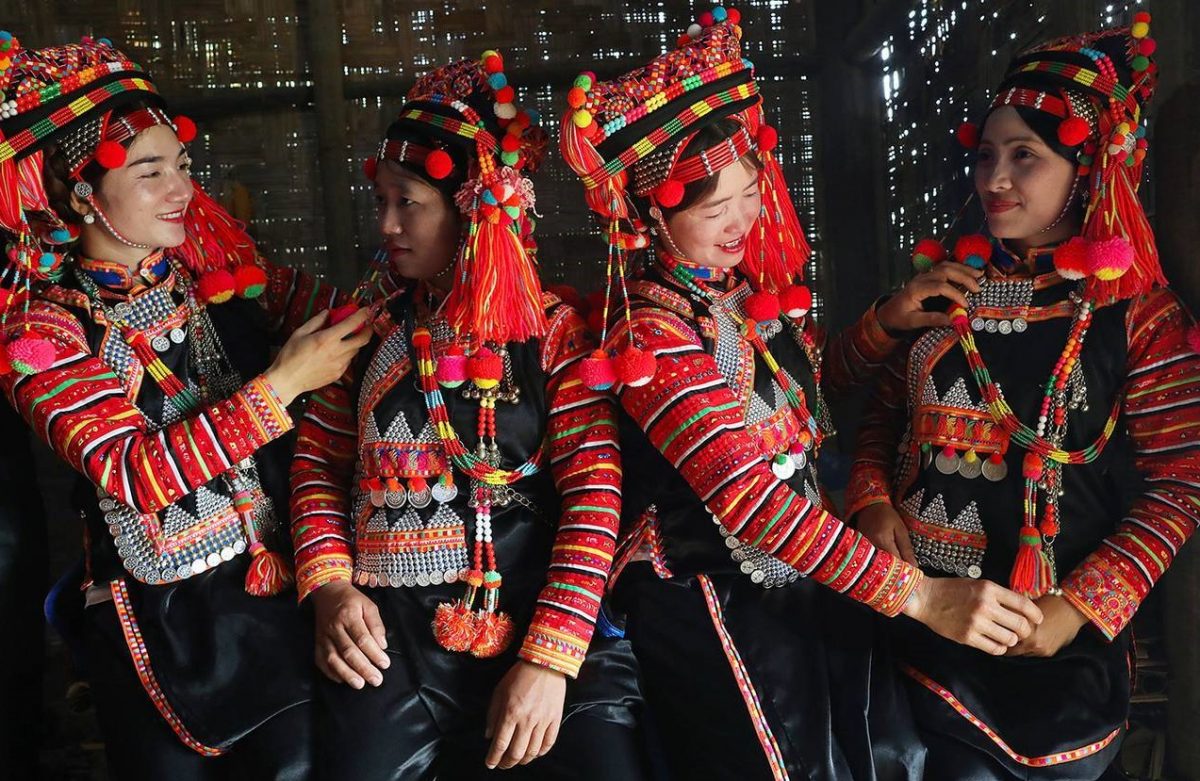Ha Giang Loop
13/05/2024Ha Giang is nestled in Vietnam’s northern highlands, is around 318 kilometers away from Hanoi. Ha Giang province is located on the banks of the Lô River and is bounded by Tuyen Quang, Lao Cai, Yen Bai and Cao Bang provinces. It is an awe-inspiring mountainous province with elevations ranging from 800 to 1,200 meters above sea level. Its landscape is characterized by a dense cluster of majestic peaks, rich cultural tapestry fostered by 19 ethnic groups calling this land home, complemented by lush rivers and vibrant flowers. It is the place with 90% of the population are ethnic minorities such as: Tay, Dzao, Lo Lo, Nung, Dzay, H’mong, Pu Peo.
Coming to Vietnam and discover the amazing landscape of limestone pinnacles and granite outcrops with The Time Journeys:
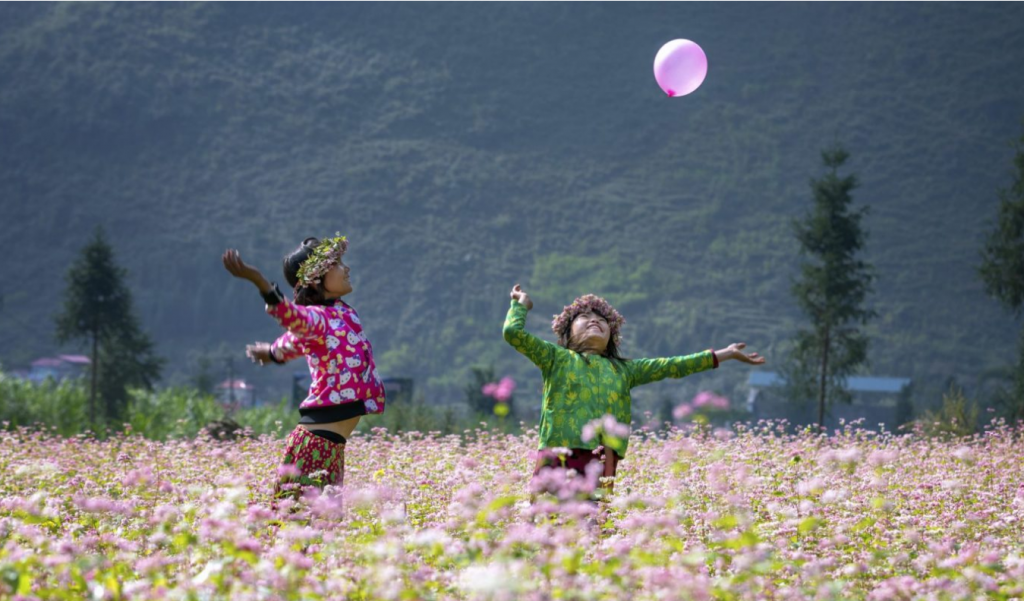
When is the best time to visit Ha Giang, Vietnam?
Ha Giang is one of the most attractive destinations in the North of Vietnam with magnificent natural beauty and a distinctive traditional cultural identity. Ha Giang exhibits its beauty throughout the year, making it a destination worth visiting at any time. This destination has the typical weather climate of the North with four seasons: spring, summer, autumn, and winter. Ha Giang is colder than other midlands and plains in the North, especially in winter.
The weather and climate in Ha Giang vary depending on each area: Dong Van – Meo Vac, Quan Ba – Bac Vi Xuyen, and Yen Minh. Compared to Dong Van – Meo Vac and Quan Ba areas, with an annual average temperature of 12 to 18 Celsius degree, Yen Minh has a milder climate with a higher average temperature.
To fully immerse yourself in the enchanting charm of this rocky plateau, consider the following recommended periods:
– From January to March is an ideal time to visit Ha Giang due to the mild weather climate and lush and green landscape. January: During the arrival of spring, the landscapes of Ha Giang are adorned with vibrant peach blossoms, mustard flowers, and plum blossoms.
– From April and May: The water season unveils picturesque sights of rice fields, especially in Hoang Su Phi, Quan Ba, and Ma Pi Leng.
– September and October: This period offers an ideal opportunity to explore Ha Giang, Vietnam’s captivating rice terrace fields.
– From October to December: Ha Giang, Vietnam unveils its most captivating season – when buckwheat flowers blossom.
From September to March as this period showcases not only the breathtaking beauty of ripe rice fields and blooming flowers but also hosts lively spring festivals.
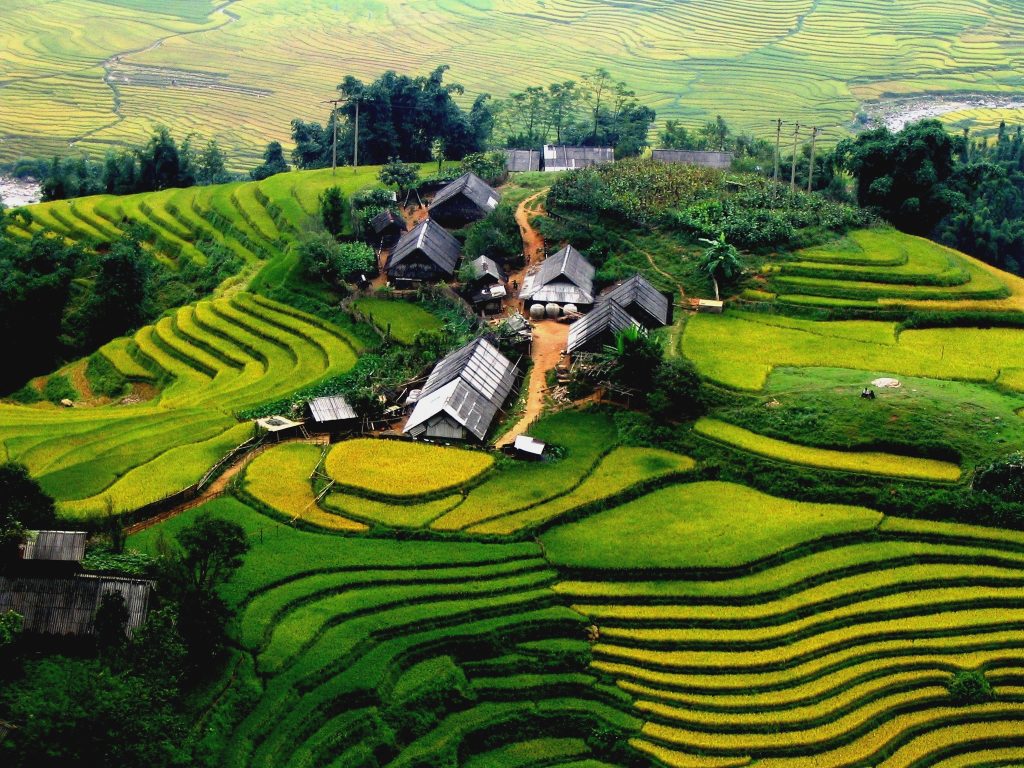
How to get to Ha Giang from Hanoi?
Ha Gian is around 318 kilometers away from Hanoi. It takes around 6 to 7 hours from Hanoi. To travel to Ha Giang from Hanoi, there are options transportation to you consider:
*** 1. Private car (Day)
Hire a private car include car/ van and a driver. The price is more expensive than take a night bus or limousine bus. But with a private car, you will have the freedom to depart at your preferred time and travel door to door. You can communicate with driver for driving speed, request restroom or meals breaks or stop along the way to visit. . Local drivers who are familiar with the loop can provide better guidance on the right places to visit, including sights, viewpoints, villages, and markets, ensuring a real experience.
*** 2. Limousine bus (Day)
There are also limousine buses available that depart from Hanoi in the morning/ afternoon to Ha Giang. These limousine buses are smaller in size and often less crowded, making more comfortable seating experience.
– If you depart from Hanoi around 6 – 7 am, you will arrive in Ha Giang is around 13:00.
– If you depart from Ha Giang in the afternoon, you will arrive in Hanoi is around 20-21:00
***3. Sleeper Bus (night)
If you choose take a sleeper bus to Ha Giang. You will depart from My Dinh Bus Stations at 21:00 and arrive in Ha Giang is around 05:00 am. The sleeper bus is popular option for traveling long distances in Vietnam. The sleeper bus is that it allows you to save daytime hours for other activities, while also benefiting from lighter traffic during the night, resulting in a slightly quicker journey.
***4. By Motobike (Not advice)
If you’re an adventurous motorbike enthusiast, you have the option to start your journey in Hanoi and ride all the way to Ha Giang. However, it’s important to note that the majority of the route consists of main highways, which are heavily trafficked by cars, buses, and trucks. The scenery may not be as picturesque as what you’ll experience on the actual Ha Giang Loop, with the more breathtaking landscapes appearing halfway into the journey.
Additionally, the trip is quite lengthy, which means you may arrive in Ha Giang feeling tired and potentially lose valuable time that could be spent exploring the loop. Nevertheless, if you have a passion for motorbike riding and sufficient time, it can still be an enjoyable adventure. Taking breaks along the way, the trip typically takes around 7 to 8 hours.
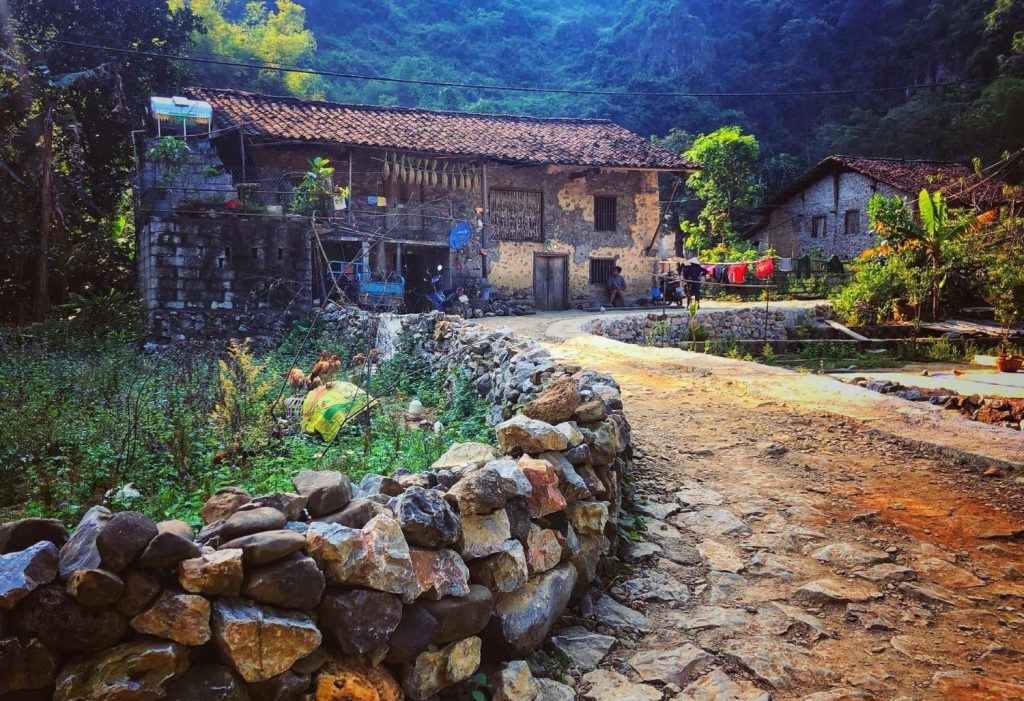
Top 10 places you should not miss when you visit Ha Giang
***1.Twin Mountains – Quan Ba
Twin Mountains is located 49km from Ha Giang in Na Khoang Village, Tam Son Town. Twin Mountains were formed from the geological movement processes of the earth’s crust, the fault of the limestone were about 400 million years ago. The perimeter of these 2 mountains are almost 1000 m² and the area is approximate 3.6 ha. It is beauty like a young lady with charming appearance. From high position, you can get a great view of Quan Ba Twin Mountains. You can stand to say Woahhh… The scenery around the mountains is breathtaking, with terraced fields, winding roads, and small villages dotting the landscape.
Depending on the time you come here, you can see it blended with different colors. They are the pink of buckwheat flowers, the yellow of ripe rice fields, and the blue sky. Coming to Quan Ba Twin Mountains, you can enjoy the stunning surrounding scenery, trekking or hiking or visiting several ethnic minority communities as the Hmong, Dao, and Tay people. You will have a chance to learn about their rich cultural heritage, traditions, and way of life by visiting local markets, festivals.
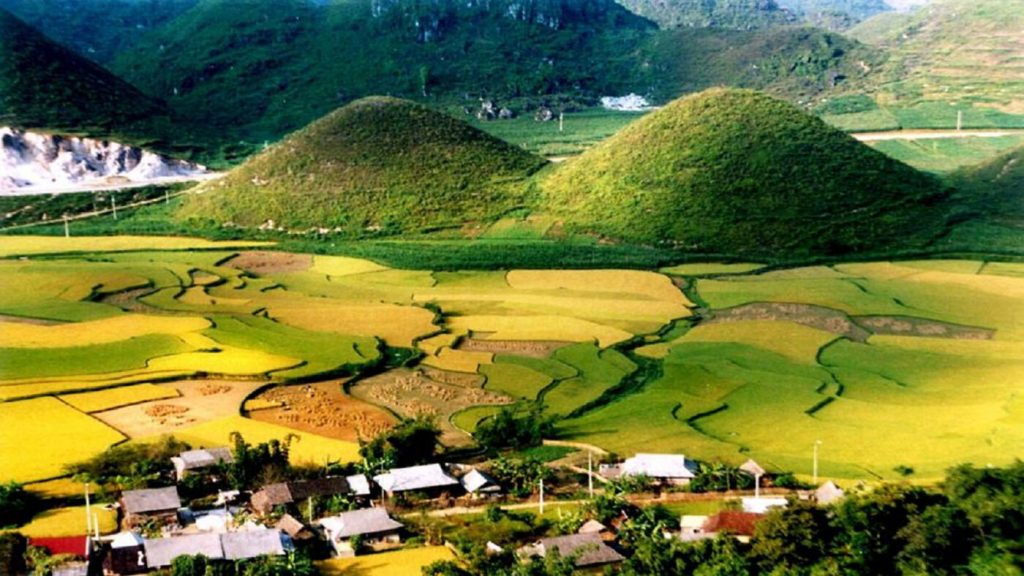
***2.Quan Ba Heaven’s Gate
Quan Ba Heaven’s Gate is one of the attractions in Ha Giang that you should not miss. The Quan Ba Heaven’s Gate is a mountain pass about 1,500 meters above sea level. From the gate, you can enjoy a breathtaking view of the surrounding mountains and valleys. The gate is named “Heaven’s Gate” because it is believed to be the entrance to heaven by the local people.To reach the Quan Ba Heaven’s Gate, you will have to take a winding road with cliffs on one side and an abyss on the other side. The road is quite steep and narrow, but the views along the way are absolutely stunning. If you drive your own motorbike, you should drive carefully and be mindful of your surroundings.
*** 3. Hoang Su Phi Terrace Fields
Hoang Su Phi is located in the remote province of Ha Giang. It is in the far north but close to the border with China. It is in among best places to visit North of Vietnam with ethinic tribes who eke out a living in difficult terrain. There are around 50,000 inhabitants and their rice terraces are extremely important to their survival.
The rice is sown in rows at the start of the summer and is harvested before winter. . When the rice is first sown, the water within each terrace glistens in the sun, but as the weeks go by, shoots begin to appear. They grow to create a different sight; green that thickens and darkens towards harvest time. When the rice is ready for harvest, they appear golden to the eye. Hoang Su Phi Terrance Fields are beautiful with yellow color of ripe rice and green of young rice.
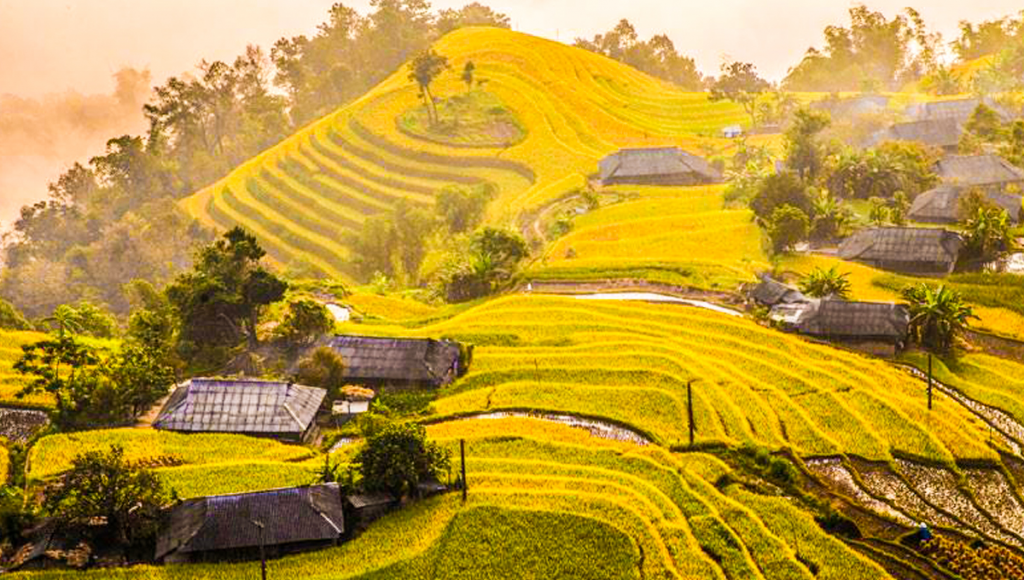
***4.Dong Van Old Quarter
Dong Van Old Quarter is small quarter and located in Dong Van District with many old long houses. It is the ancient architecture over 100 years old. It is very impressive to experience the lifestyle and daily life of ethnic people here such as: Kinh, Mong, Hoa, Tay…
There are around 40 houses in this old quarter and they are surrounded by rocks. The common architecture is the two story house and yin and yang roofs. There is night market in old quarter on 14 – 15 – 16 March of Lunar Calendar when all houses hang red lanterns, display ethnic brocade and they sell traditional food as Thang Co, Men Men, Ta Chua of the H’mong. If you have opportunity to visit Night market, you also experience culture of ethnic people and soak into dance of the Lo Lo. Dong Van Old Quarter is a best destination when you should not miss in Ha Giang.
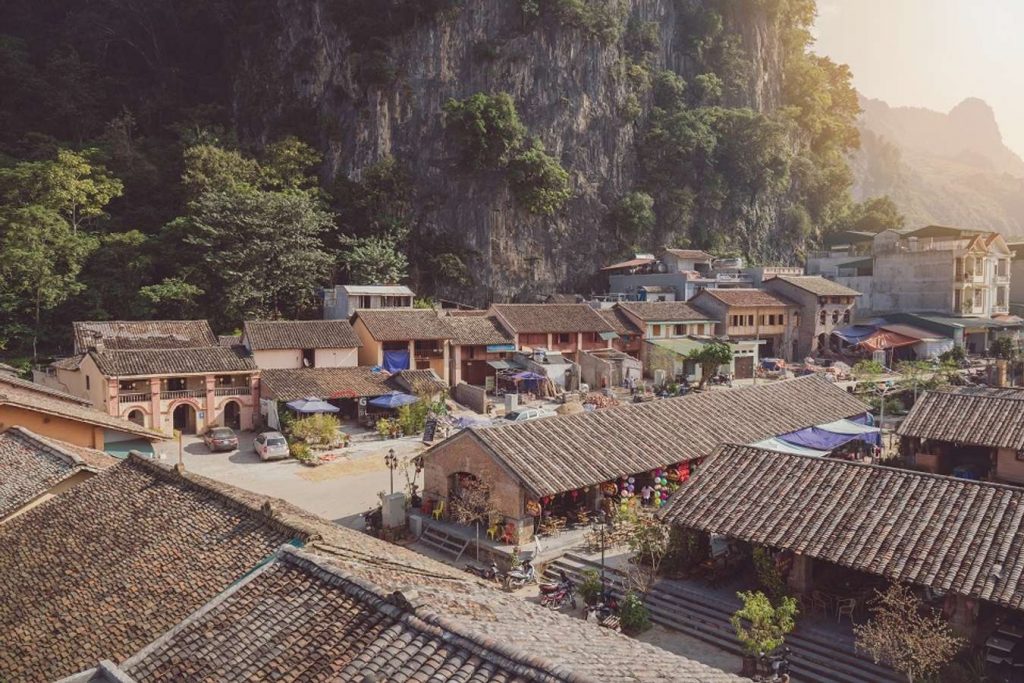
***5.Dong Van Karst Plateau
The Dong Van Karst Plateau is a UNESCO Global Geopark located on the territory of all four districts of Ha Giang province, namely Dong Van, Yen Minh, Quan Ba, and Meo Vac, with a total area of 2500 square kilometers. This unique and breathtaking landscape is characterized by towering limestone cliffs, deep valleys, and unique rock formations. Passing about 150 kilometres of winding roads with a deep abyss on one side and rocky mountains on the other, you will see the majestic scenery of Dong Van rocky plateau hidden in the landscape.
Each season, Dong Van Karst Plateau has a distinct beauty with different types of flowers. Coming here in spring, you will catch up with blooming plum blossoms and peach blossoms. In autumn, you can see the pink and purple colour of buckwheat flowers covering the hillsides. Coming to Dong Van Karst Plateau, you will have exciting experiences, from crossing adventurous passes to admiring poetic and romantic flower valleys.
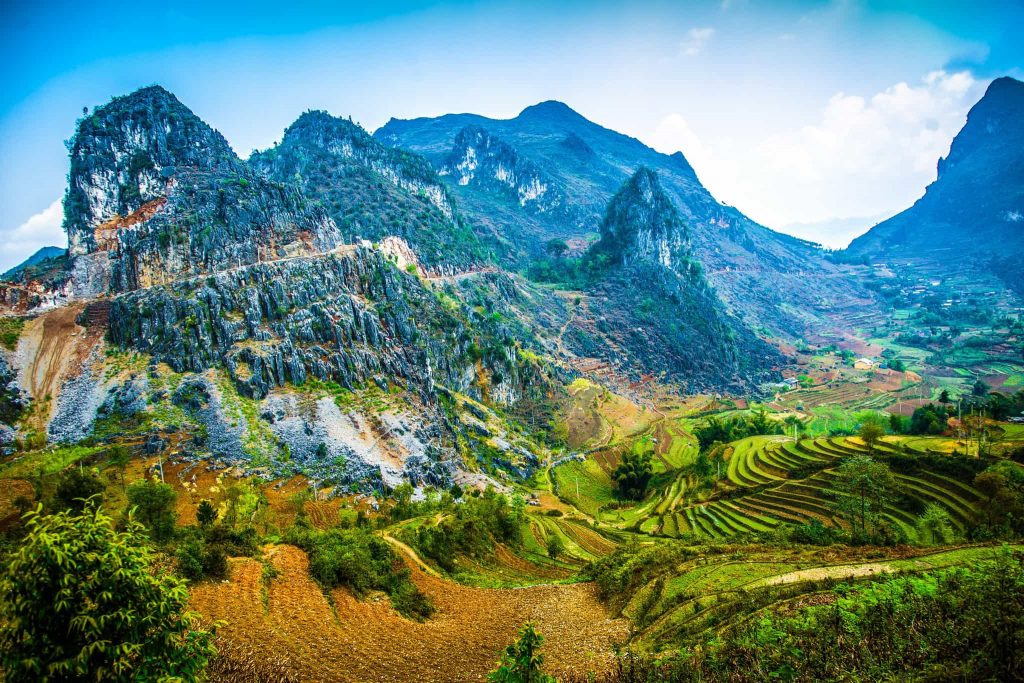
***6.Ma Pi Leng Pass
Ma Pi Leng Pass is situated between Dong Van and Meo Vac. It is a high mountain Pass at an elevation of 1.500m above the sea level. Ma Pi Leng is one of the top 4 most dangerous passes of Vietnam with a length of about 20 km.
The weather is beautiful in Ha Giang in four seasons. So you can pass the Ma Pi Leng Pass at any time of the year. However from June to August is the summer. It is sunny and the right time to have beautiful pictures of the plateau. If it is rainy, the road is quite slippery and it is difficult to ride.
Come to Ma Pi Leng, you can see the mountains under your feet, the local village with their life far from your seat, see the retraced fields and Tam Giac Mach Flower from end of October to December.
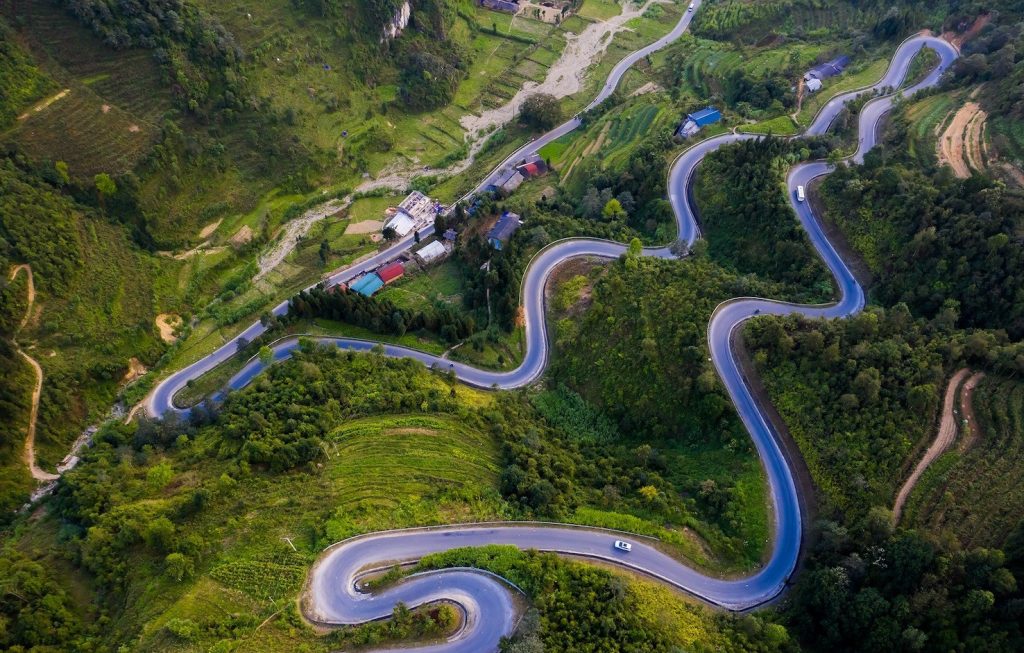
***7.Lung Cu flag tower
Lung Cu Flag Tower is built in the peak of Dragon Mountain at altitude of 1,700m. It is located about 160km to the North – east of in Ha Giang City. Lung Cu Flag Tower is the landmark with important historical significance, marking Vietnam’s territorial sovereignty.
To get Lung Cu Flag Tower, you will step up 389 steps up to the high mountains. To get the peak, Here you can admire the spectacular natural scenery of Dong Van Karst Plateau, terraced rice fields, ethnic villages. At the foot of the flag tower, there is a commemorative house, where displays work tools, costumes and cultural products of the ethnic groups in Ha Giang Province. Under the mountains, you can the ethnic villages where you can discover their daily life and culture. High mountains with Happy Road will become smaller and within your eye view.
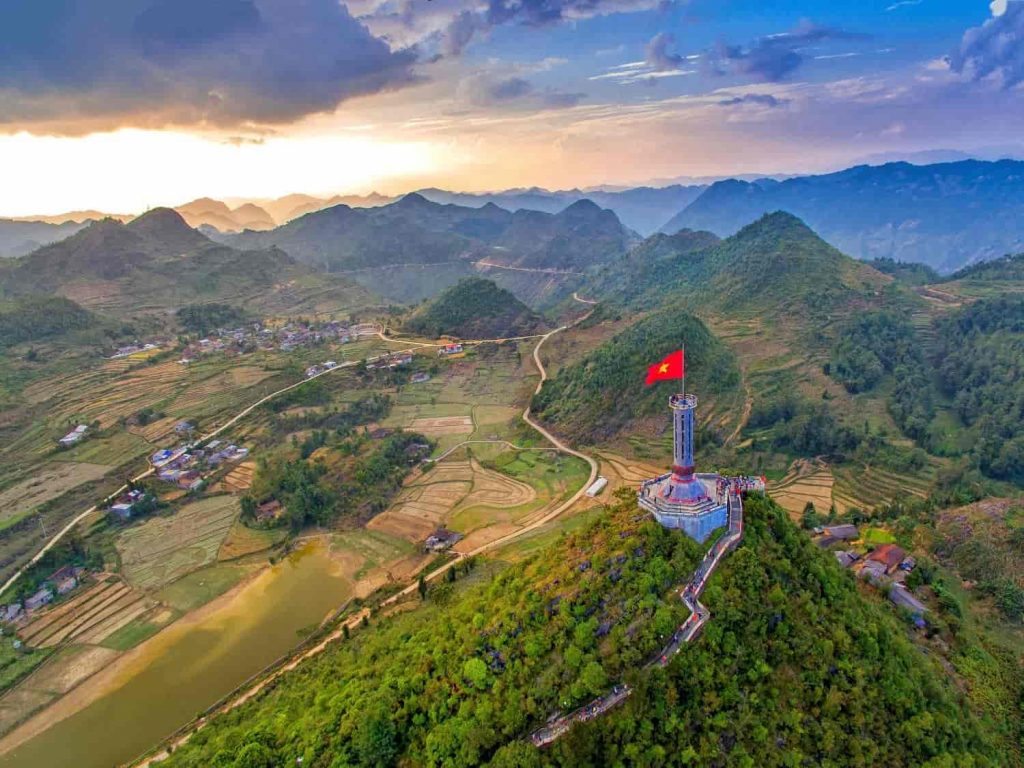
***8. Hanh Phuc road (Happy Road)
Happy Road is 185 km long connecting many districts of Ha Giang, running through the Dong Van stone plateau, Ha Giang. It was formed by the hands of more than 1,300 men and women volunteers from 6 provinces of Viet Nam and two delta provinces (Nam Dinh, Hai Duong) and more than 1,000 people of 16 ethnic groups on the rocky plateau embarked on Mountains open the way within 7 years.
Happiness Road starts from Ha Giang City with milestone Km 0. The first 20 km of the road is relatively flat, we will meet the Pass Gate – Quan Ba heaven. Pass with a large slope to make cars have to crawl up. Standing on the Gate of Heaven, you will see the wealthy Tam Son town stretching out in the heart of the valley and Nui Doi – the twin mountain.
The road named “Happiness”, a happiness from the blood and bones of thousands of thousands of workers and young people. Style dating from 50 – 60 centuries ago. Not only “happy” by the effort to make the road that thanks to that road Ha Giang land and thousands of people here are no longer isolated as before, although poor but all aspects of life such as: Education, health, schools, utilities, and people’s lives are gradually growing. It is a way to brighten the future of many children now and forever.
The Road to Happiness brings a change of beauty in each season. In the winter, the road is grayish black patches of clouded sky, misty mist. In the summer, the road glows with the sunbeds of the dawn on the rocky plateau or the rainbow after the sudden rain. From September to November, this road diminishes visitors by the yellow rice season, purple pink of the buckwheat flowers and wild daisy flowers.
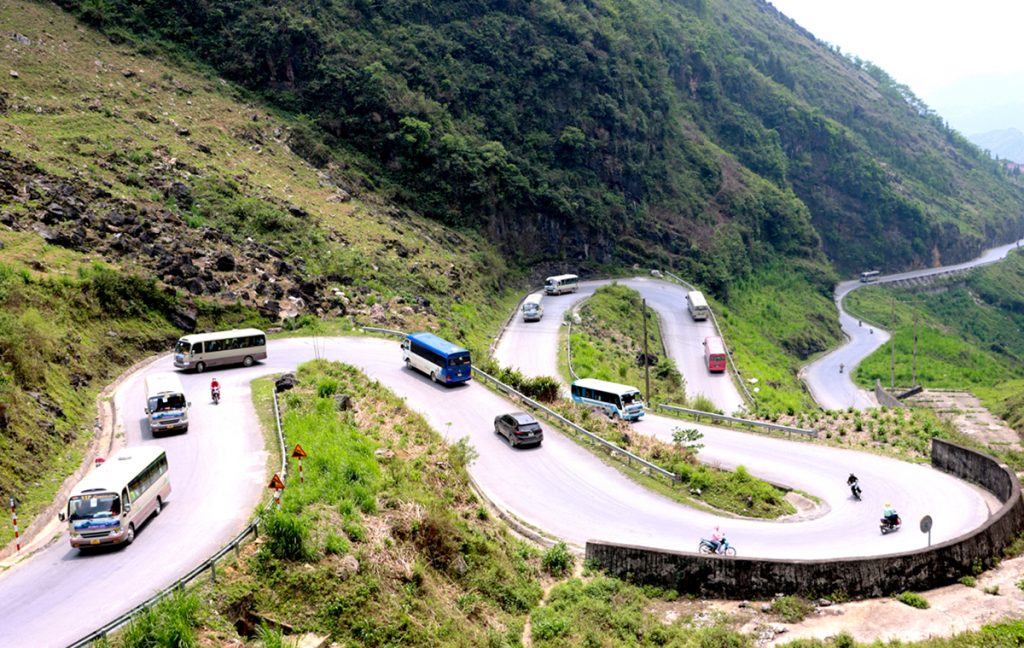
*** 9.Lung Cam village- Pao’s story Vietnam movie
Lung Cam village is located around 25km from Dong Van Town, closed to No 4C highway. The village has 61 households and around 290 inhabitants. There are ethnic minority of white H’mong and Chinese with many ancient houses. The people here live on doing milpa. Corn, buckwheat, vegetables, beans are the main food here.
Lung Cam village has a reputation after chosen as the setting scene for the film name Pao’s story Vietnam movie which won Golden Kite Prize and a very famous prize of Vietnam movie assosiation. Coming here, you will see how beautiful architecture of ancient houses and experience the daily life of the local people. Ethnic village is really attractive to many visitors, the both of younger and older.
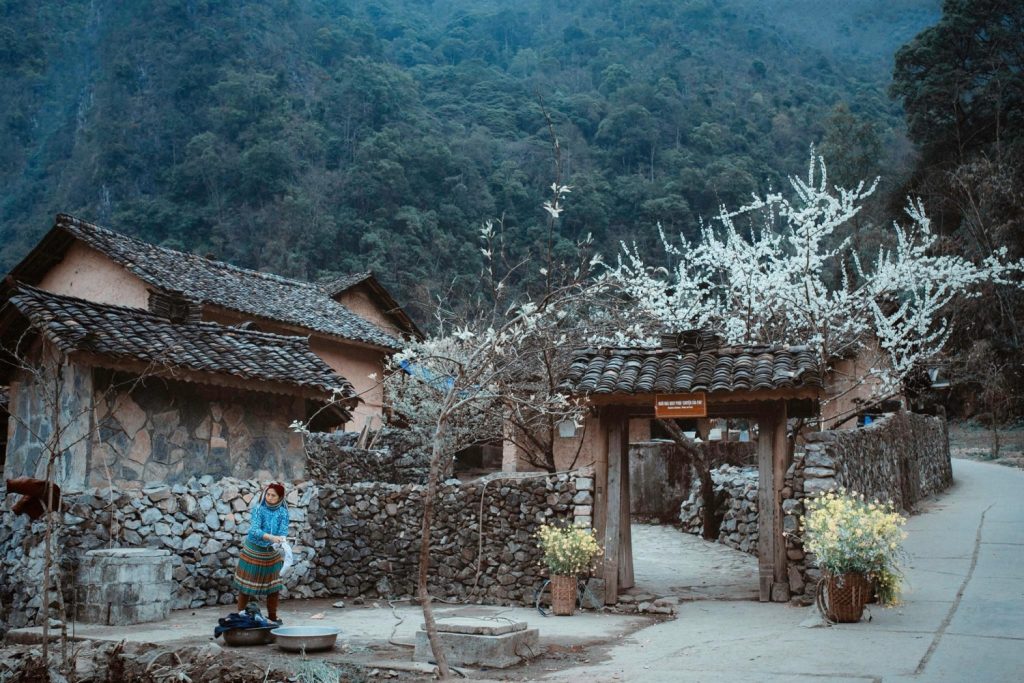
***10.Mansion of Vuong family
The Mansion of Vuong family (Vuong Chi Sinh) is located about 24 km from Dong Van Province, in Xa Phin District. It was first buit in 1019 and completed in 10 years later. The structure has been classified as a relic from 1993.
The mansion is situated at 1600 meters height above sea level. It was built in turtle-shaped hill, looking to the south. The structure has shape of word “Vuong”. Through the time, the mansion still retains the original appearance. This place which converges all unique architectures of upland is not large but it has a beautiful architectural structure. Vuong mansion was built by the skillful of craftsmen who came from Yunnan (China) along with the best of the H’Mong workers. Therefore, the structure has architecture of China reign of Thanh combined with essence of the H’Mong. In the house, there hang a picture of Nguyen dynasty. The whole of mansion has an area of 1.120m2 with 64 different rooms including living room, office, bedroom, family member’s room, kitchen, opium storage…
This is like a gem of Vietnam in the forest. This huge mansion is surrounded by high ancient green trees. Through long time and history, this Vuong mansion still keeps its mysterious beautiful nature.
